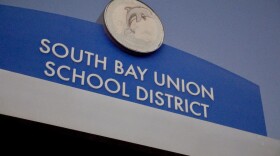Firefighters brought a sprawling wildfire near Los Angeles under greater control Thursday, despite a flare-up in a remote canyon that prompted about 25 nearby residents to be evacuated.
The blaze was 38 percent contained Thursday morning, up from 28 percent the previous day. The fire now measures 144,743 acres, or 226 square miles, and is one of the largest wildfires in Southern California history.
Despite the overall progress, firefighters encountered a flare-up in the canyon as strong downslope winds "just kind of blew the fire up," said U.S. Forest Service official John Huschke. Twenty-five people in 11 homes were evacuated.
"Everything else looks really good," he said.
Some 12,000 homes in foothill communities below the fire's southeastern edge officially remained threatened, although other communities farther west that were under siege for days were out of danger.
The forecast called for hot and dry weather in the next couple days, with Thursday's high hovering around 100 in the fire area, the National Weather Service said.
The wildfire, now in its eighth day, destroyed 64 homes, burned three people and left two firefighters dead. During the night, a firefighter injured his leg when he fell 20 foot from a cliff and was taken to a hospital by a medical helicopter, officials said. He was in stable condition.
Full containment was expected Sept. 15, meaning fire officials expect that they will have the blaze completely surrounded by then.
Firefighters have been conducting an aerial assault on the fire to complement the efforts on the ground. Helicopters have doused the fire with 1.7 million gallons of water - enough to fill about three Olympic-sized swimming pools - while airplanes have dropped 670,000 gallons of retaradant on the fire.
Many homes were saved, but damaged areas looked like war zones to some returning evacuees.
"It's like, is this really our house? Is it really still here?" T.J. Lynch said about returning to his home in the Tujunga neighborhood late Wednesday. "Because we had made peace with the fact that we'd never see our stuff again."
"It looks like nothing changed, but when the sun comes up tomorrow, I expect we'll see the hills blackened and gray," the screenwriter said. "We'll hike up the hill and see how close it came to our neighbors."
Officials said they were pleased with the progress, but said they have much more work ahead.
"We're changing the pace and treating this as a marathon," U.S. Forest Service incident commander Mike Dietrich said. "If it were a 26-mile race, we'd only be at mile six."
The search for what sparked the blaze intensified Wednesday when U.S. Forest Service investigators gathered along a road in a blackened forest to hunt for clues near where the fire started. They shook soil in a can and planted red, blue and yellow flags to mark evidence beneath a partially burned oak tree at the bottom of a ravine.
Deputy incident commander Carlton Joseph said the fire was "human-caused," meaning it could have been started by anything from a dropped cigarette to a spark from something like a lawn mower. Forest Service officials said there was no lightning in the area at the time and no power lines in the vicinity, but later backtracked on Joseph's comments, saying they are looking at all possible causes.
"The only thing I can say is it is possibly human activity," Forest Service Commander Rita Wears said.
The fire also cast a smoky haze over the Los Angeles area and gave the night sky an eerie glow. The smoke spread throughout the West, affecting air quality in Las Vegas and combining with soot from local fires to block mountain views in Denver.
---
Associated Press writers Greg Risling, Thomas Watkins, Jacob Adelman and Daisy Nguyen in Los Angeles contributed to this report.
Related






